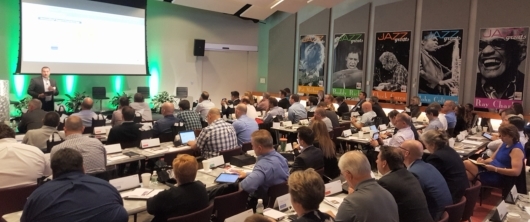Saving money is seductive; after all, why pay full price for something when you can get it cheaper elsewhere? It’s an attitude that’s certainly prevalent when it comes to print supplies. But, with consumers always on the lookout for low-priced toner and ink, you as channel partners need to understand the print supplies aftermarket, the connected risks and legal consequences.
What is the aftermarket and why does it affect me?
Let’s begin by clearly defining the different options in the printer supplies aftermarket as per the chart below.
Original Equipment Manufacturer (OEM)
In top position, in terms of price and quality, we naturally have OEM supplies – the highest quality option specifically engineered to match the printers they were designed for.
Re-engineered
Next is a great alternative to these top dollar OEM options: Xerox high-quality, re-engineered supplies for non-Xerox printers. These consumables deliver outstanding quality for a lower customer price point (25-40% savings versus OEM supplies) and can provide you with great margins of 25% and upwards.
Re-manufactured, Cloned, Counterfeit or Re-filled
Then there are re-manufactured, cloned, counterfeit and re-filled cartridges. Whilst the price is low, remember that cheap doesn’t always equal a bargain. Be very clear on the risks you and your customers can face when using these items and ask yourself some key questions. For example:
- Where and how were these cartridges built?
- Were health and safety procedures followed to ensure the well-being of the people who made them?
- Are you sure they will work out of the box so you won’t have disgruntled customers?
- Are there any toxicity issues with the toner or component parts that could cause potential health issues?
- Will they actually provide quality prints that your customers can use?
- And what guarantees are in place if their use actually causes printer to malfunction or, horrible thought, stop working all together?
Six reasons not to dabble in the clone zone!
- Bargain brand cartridges often infringe OEM patents. If you sell them you are breaking the law and can face prosecution
- Even if a patent is not violated, the clone may infringe the OEM’s Intellectual Property which is also illegal and a criminal offence
- European law has outlawed all false labelling, so if you sell counterfeit cartridges as ‘refurbished’ or ‘refilled’ then, you’ve guessed it, you can expect the attentions of the law
- Bargain brand cartridges can damage printers, meaning you may be liable for repairs, replacement or even loss of productivity or business
- Some clones contain environmentally hazardous toxic chemicals which could damage the user’s health. Morally and commercially this is a risk not worth taking
- Lastly, independent testing shows bargain brand cartridge page yields can be 50% lower than OEM cartridges and, really worryingly, can have failure rates of up to 100%!
Your ABC to deciphering the real deal:
It can be genuinely difficult to discriminate between a quality OEM product and a clone. So, here is my simple ABC guide to getting it right:
A. Firstly, look for the OEM AUTHENTICATION label. The Xerox supplies holographic security label for its own range of printer supplies includes a unique serial number and barcode.
B. Be clear who you BUY from. Make sure you source all stock from an Authorised Supplies Distributor in your own region.
C. Lastly, if the COST of the product is suspiciously cheap, be wary! Low prices usually equal cloned supplies.
With severe legal, health and environmental implications, dabbling in the lower end of the supplies aftermarket is to be avoided. At best it’s a false economy and, at worst, it is commercial suicide. Do get in touch if you need any help or advice in this complex area.
Subscribe to the Channel Partner Connection and receive email updates when we publish a new article.





Great article Julian, and the interesting impact for my side of the business is the yields where many are basing their TCO / Cost Per Page on the advertised yields which can be very misleading.
Hey Dan,
Thanks for that … You are 100% right !! Some people don’t realise the false economies that are associated with many ‘cheaper’ options and often get misled and end up paying for this in quality or profit.
[…] blog, on Xerox’ Channel Partner website, was written by Julian Patel, and is called When is a clone […]
@Julian: can you explain to me the difference between “Xerox re-engineered supplies for non-Xerox printers” and cartridges remanufactured by other reputable companies
Julian,
You don’t explain how “re-engineered” supplies from Xerox are any better than remanufactured supplies. Other remanufacturers claim “25-40 percent savings over OEM,” and your list of things to be cautious about would also apply to Xerox re-engineered. Also, I think it is somewhat dishonest to lump remanufactured with clones and counterfeits. You should know better.
Finally, exactly how is “re-engineered” different from “remanufactured?”
Thanks for writing about this important topic.
Dan Headrick
Thanks to everyone for the interest in this article and for the comments. It is clear that some elements contained within the article have prompted questions– which is understandable on such a large and diverse topic. I will concede that perhaps I have generalised in some areas but due to the huge number of products and options available in the market it is very difficult to be 100% specific.
Anyway, I’ve been in the supplies business for 20 years as both a reseller and now as a vendor – so I’ve seen both sides and one thing I’ve learnt (please forgive the pun) is that in the toner business, not everything is black and white !
Not all print supplies are created equal and in this article I’ve provided some questions for channel partners to ask to help them make an informed decision. Sure, for some channel partners who perhaps don’t need or want to pay for the guarantee that OEMs provide with their supplies, then there are many viable alternatives out there.
The point I’m trying to make is that, if you are not buying a genuine OEM product, that you should always ask yourself some key questions – sometimes the decision maybe to go ahead and sometimes it maybe to not do so. But, always, always give yourself the best chance of making the right decision for you, your business and your customers…
As for the difference between Xerox Re-engineered cartridges and remanufactured – without going to pages and pages of technical specifications and also acknowledging the fact that there are thousands of differing products out there (therefore I am generalising to an extent through necessity again here) – simply put, I would say that the Xerox product can be differentiated by the resources, processes, experience, parts and expertise used in its production and planning which has been gained as an OEM in the production of Genuine OEM toners.
Many thanks and happy printing..
Interesting Article Julian – we supply many NHS customers and whilst they are often looking for a cost saving they also need the reliability of the original cartridge or a high quality re-engineered cartridge such as the XRC Brand
Thanks Jon – Glad you enjoyed it !
Agree 100% in that there are people looking for differing options in all markets, definitely including the Health Sector. But as you say, the quality has to be at the forefront of any decision and I am sure that is where asking the right questions for you and your partner has led you to be so successful in this field.
Jules